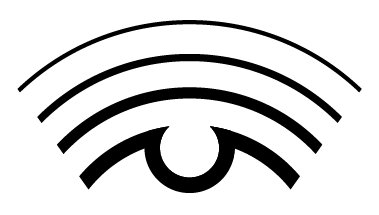A few thoughts on color
This is the first in a series of posts that share observations and recommendations based on our ongoing experiences in the brandscape. Please, cherry pick what you will. We offer these as a way to keep the conversation going.
This past week, a new client approached The Office to inquire about the color purple. Not the movie. The hue.
After moving forward as a successful regional contractor for the better part of ten years, he was hoping to shake things up. His branding currently used the safest of tones - blues and greens, set on a white canvas. But he wanted to talk about purple. Would this shift in his brand story help his business stand out? Would it be appropriate for his industry and customer demographic?
Well, it depends. Color is a complicated, if not controversial question.
There have been countless studies on color psychology and how different hues resonate in marketing. And for good reason. One study, titled "Impact Of Color On Marketing," points out that 90% of snap judgements made about products can be based on color alone.
Many studies seek to pin down predictable reactions. For example, Yellow is often associated with optimism, while Blue is credited with trustworthiness and dependability (hence its common use).
While these generalities carry some weight, the truth is much more muddled. In reality, personal preferences and experiences, along with cultural contexts and upbringings, ultimately create a highly individualized perception of color (see “Color Psychology: A Critical Review”).
So how does one choose color? What would be the recommendation for our contractor client? Again, it depends. A UK study published in 2006 shows that the right color for your brand hinges on "perceived appropriateness" in the minds of your customers. Will they think the color in question fits what's being sold? And how do you determine that?
Ideally, this would involve collecting customer feedback that asks, "what color is appropriate for what I'm selling?" Of course, with smaller businesses this isn't always viable. An alternative would be to ask yourself – based on your knowledge of your customer – is this color right for my business? Is it right for my brand's personality?
One quick consumer metric would be to consider the average gender of your customers. Research at Microsoft's Azure Group shows that there is a definite difference in color preference between men and women. Such a point is relevant in our example, as men tend to dislike purple, whereas it ranks #2 with women.
But the most important criteria to consider is differentiation. This is true not just for color but for every aspect of branding. Marty Neumeier, one of our favorite apostles of all things brand-oriented, insists that radical differentiation is the key. "When your competition zigs, zag," he declares.
This is consistent with something called "The Isolation Effect," a psychological principle delineated in a 1974 Dutch study. Simply stated, something that stands out from its context is more likely to be remembered.
So, for our contractor, what color would set him apart amongst his competitors? Is it a sea of blue, in which a bold, bright purple would stand out? If so, then perhaps his hunch is right.
Image courtesy of Jess Bailey on Unsplash


